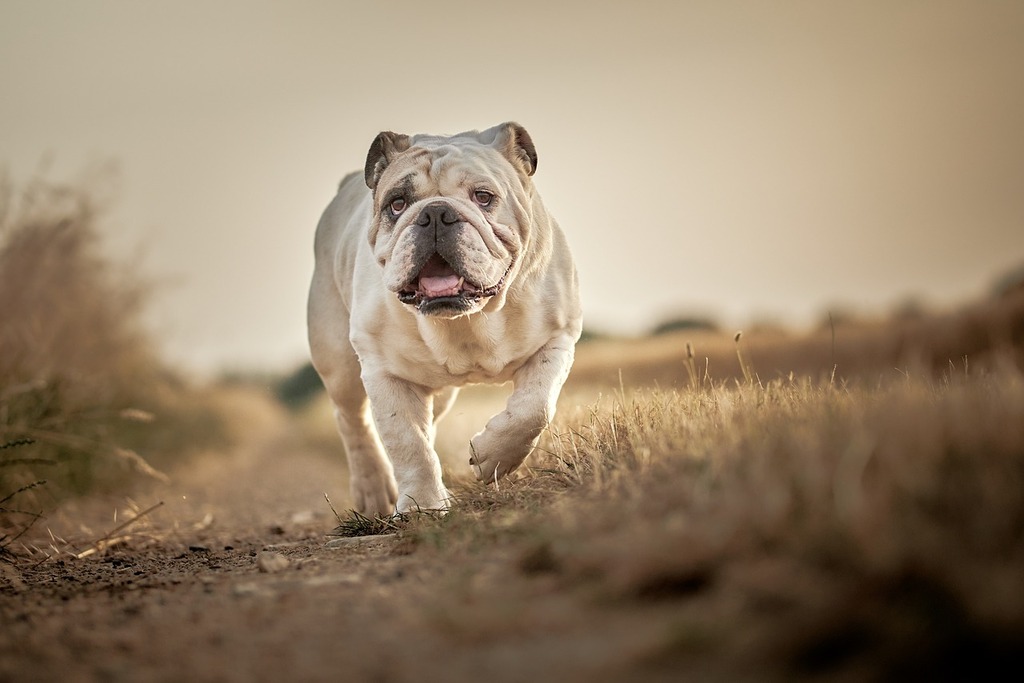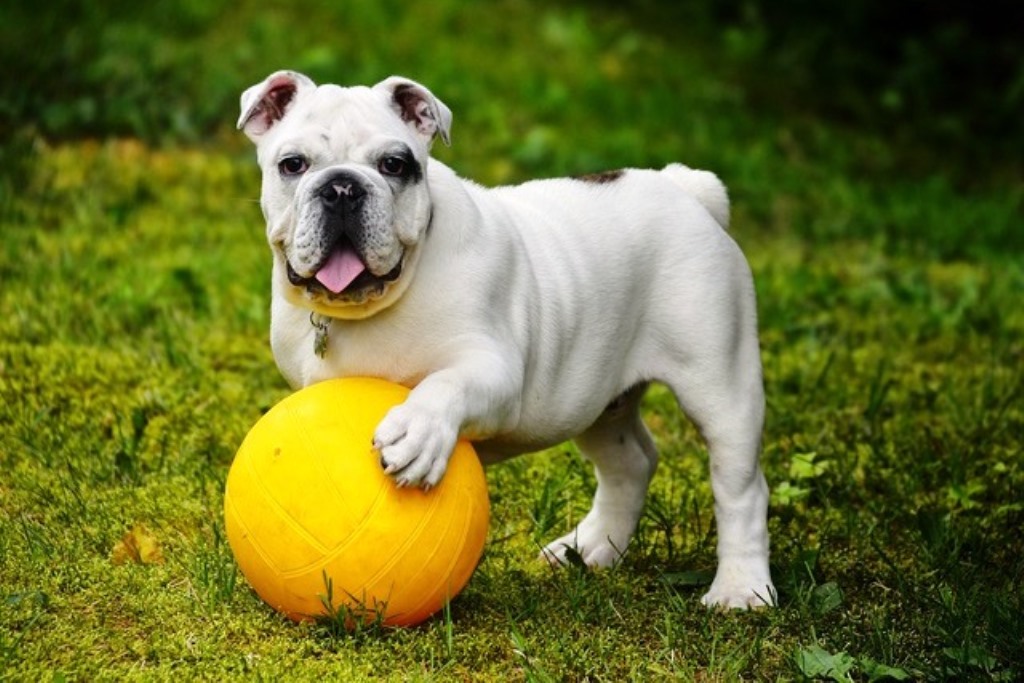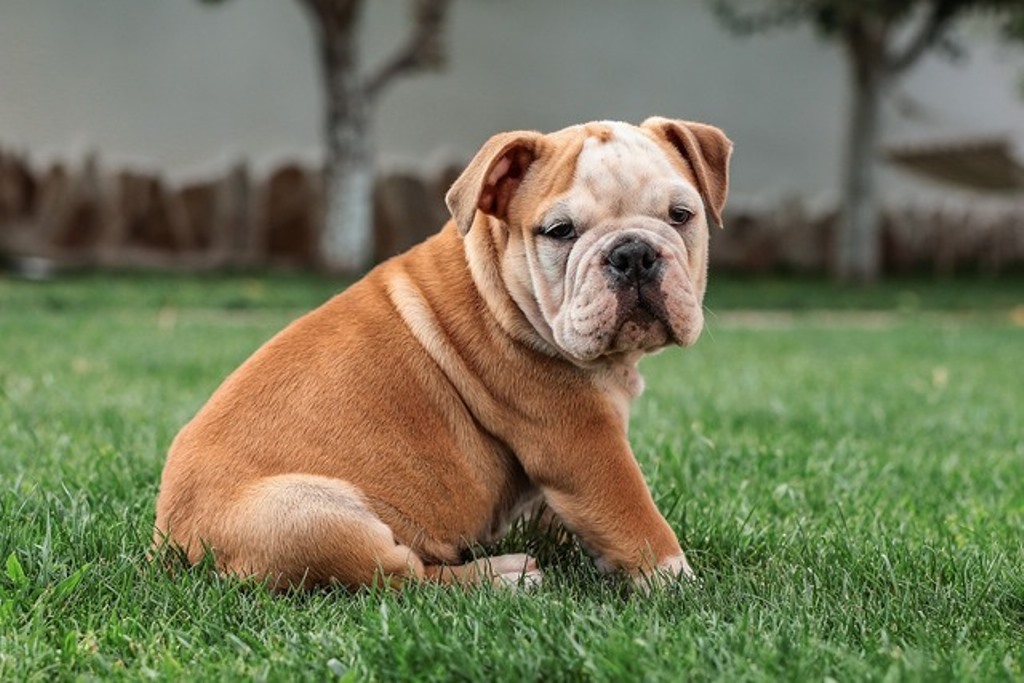
Traits and Behavior of the English Bulldog Breed
The history of the English Bulldog dog breed is rather complex and very old. Its origins are spoken of as far back as 1300 and even earlier in the British Isles. At that time it was used for bull fighting. A document from 1209 tells of a dog that chased a bull all over Stamford; it seems that the animal belonged to a butcher and was in fact a Bulldog. Much was said about it, however, in the 19th century when these dogs were brought into arenas in bloody bull fights.
Like all Molossians, the Bulldog is also descended from the ‘Asiatic mastiffs’ imported by Phoenician merchants to Britain, and even in ancient Rome they fought against slaves and ferocious beasts. Initially they had longer legs and less prognathism of the muzzle, then over the centuries more and more efforts were made to select their physique and temperament to make them more fearsome.
After 1835, the Bulldog dog breed began to evolve into the stockier, shorter-snouted version we know now. And its fearsome character, too, changed dramatically, becoming in effect the sweet and cuddly companion dog it is today. The breed actually seems to have been the result of a genetic anomaly, carried on by breeders through a series of selections that have determined its current standards, which are very different from those of the dark days to which it owes its name.
Character of the English Bulldog dog breed

The English Bulldog is the classic companion and house dog. Very sweet and affectionate, it establishes a loving relationship with its owner and family members. He loves being indoors and divides his time between a nap on the carpet and a nap on the sofa. He must be urged to move, he is totally lazy if left to himself, although he occasionally has moments of performance that make him seem like an active dog.
It is a dog that is also chosen for its proverbial patience with children, with whom it loves to play and towards whom it is very protective. It always seeks to be petted and taken into consideration by everyone around it on a daily basis. He generally likes to be with people, in fact he is not a dog that can be left alone for a long time, as in the long run he could become an apathetic, dull and sad dog, at risk of depression.
They are also very courageous, which is why they can also be perfect guard dogs. It is one of the most suitable breeds for those looking for a calm dog, therefore very suitable for elderly people or people who do little physical activity, and it fits everywhere, even in one-room flats, all he needs is a small place all to himself and he is happy.
The English Bulldog is a dominant breed, so he can sometimes be aggressive with dogs of the same sex, so socialisation from an early age is good for him to be with other animals. He also has no problems with cats or other small animals. As far as strangers are concerned, he has a good sociability with strangers who pose no danger, and after an initial sniff he welcomes everyone with joy.
Appearance of the English Bulldog dog breed

The English Bulldog is a medium-sized dog of small stature, its height at the withers ranges from 35 to 40 centimetres for a weight of around 25 kilograms, the female usually a little less. The appearance of this dog makes it almost funny, and its standard of beauty is unique, but even if it is not beautiful, it is liked very much, more for its sympathetic appearance.
It is short and stocky, broad, powerful and compact; it has a strong bone structure protected by hard muscles, the front legs are short but powerful and muscular, slightly angled outwards, while the hindquarters are narrower with slightly longer limbs than the forelegs. The tail is inserted rather low and stretches straight, then curves downwards, not very long, rather thick at the root it reduces at the tip.
The head is very large and broad, typically brachycephalic, with a very short nasal bridge. The muzzle is broad, short and turned slightly upwards. The truffle and nostrils are wide and black in colour, they are very prominent. The jaws are massive and wide and have an inverted bite. The lower jaw protrudes in relation to the upper jaw, to the point of slightly exposing the lower incisors, the ears are thin and small and fold forward at the back, the eyes are distant and round.
The skin is droopy, with deep wrinkles and thick folds, on the face and neck where it forms a dewlap. The hair of the English Bulldog is smooth of fine texture, short and thick. The colours can be varied: plain, with a mask or black muzzle, but also tiger, red, with various tawny shades or white and mottled with various patches and spots.
Care and health of the English Bulldog dog breed

Seeing it one might think that the English Bulldog is a strong and robust dog; in reality this is not the case, in fact they are very delicate dogs that need a lot of care, especially for respiratory problems that are greatly exacerbated in hot weather. In fact, this dog suffers from the heat and also the cold, but above all from the heat, so you must avoid exposing it, keeping it cool, while in winter when you take it outside it must be covered.
Particular pathologies that can affect the English Bulldog are hip dysplasia, soft palate, eye diseases, heart problems, cancer and others. Unfortunately, the continuous selection of the breed for aesthetic purposes, has caused an alteration of the genome by losing many of the genes that regulate the normal immune response and therefore it is in very poor health and also has a very short life expectancy, on average 8 years.
Very often he snores, not because of his nasal passage, which is really short, but this is solely due to his short palate and the particular shape of his mouth which leads him to drool a little.
As far as the care of his coat is concerned, this does not require any special care, apart from a brush once a week to remove dead hair, but the folds on his muzzle and neck must be cleaned regularly to avoid skin infections.
It has a tendency to put on weight, both because of its particular conformation, because it does not do much motor activity and because it is endowed with a robust appetite, therefore its diet must be balanced and precise for its weight, obviously with top quality food.






















